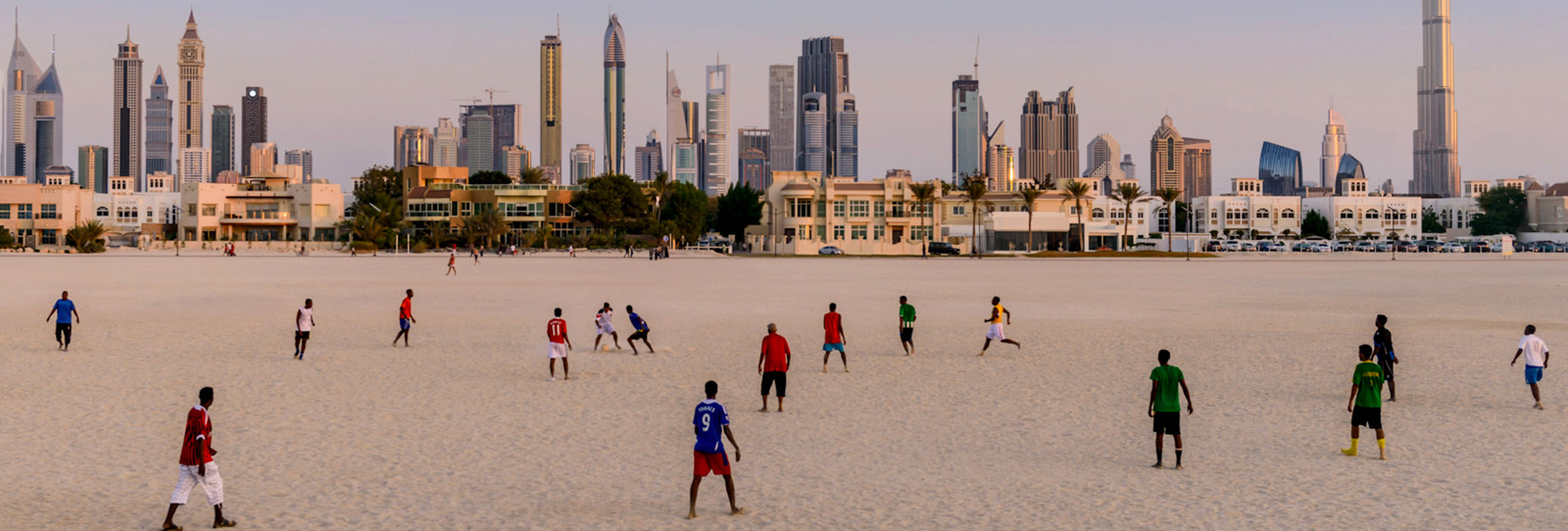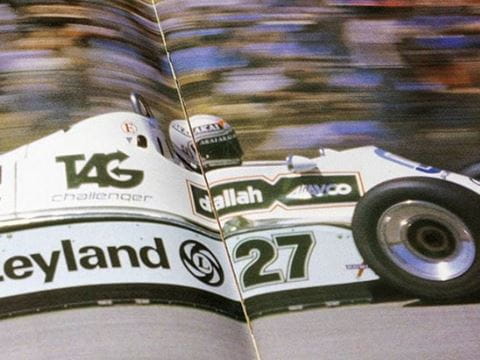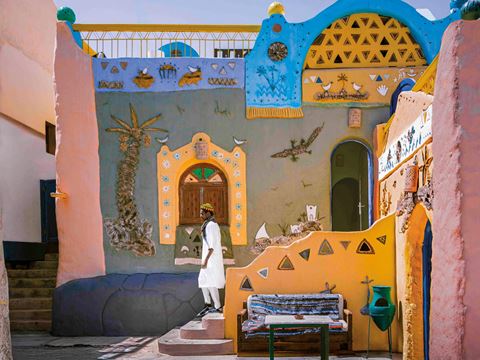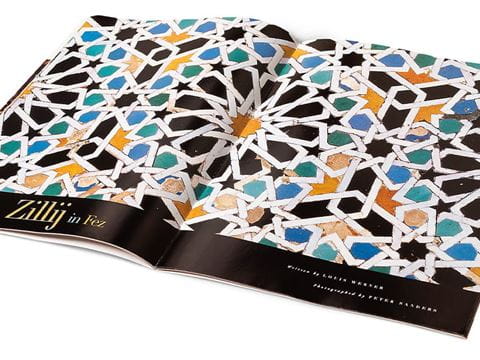
FirstLook: Jumeirah Beach, Dubai
It was as if Dubai's sand "reflected ... not the forms of the towers but the humanity that built them," says photographer Bjorn Moerman.
As an airline pilot, I have visited many places. In few have I seen such an impressive city expansion as in Dubai, my home for more than 15 years. Historically a pearl-trading center, Dubai has reinvented itself in just a few decades—together with its six neighboring emirates—into one of the world’s busiest business, cultural and tourism centers.
During a walk on a Friday afternoon I came upon one of the weekend football matches that are popular along the sands of Jumeirah Beach. As the players seemed to mirror the skyline of Sheikh Zayed Road behind them, they made the city seem both big and small at the same time. I stopped to photograph the ebb and flow of the game as the light warmed toward sunset. At this particular moment, the players looked as if they had been arranged almost as deliberately as the buildings, and the sand reflected, for that instant, not the forms of the towers but the humanity that built them.
A few of the players looked up and waved to me; I replied with quick hellos. I didn’t learn where they were from, or where they work during the week. Like me, they could belong to any of the more than 200 nationalities that make this one of the world’s most diverse places. They turned back to the game; I walked on.
www.bjornmoerman.com
During a walk on a Friday afternoon I came upon one of the weekend football matches that are popular along the sands of Jumeirah Beach. As the players seemed to mirror the skyline of Sheikh Zayed Road behind them, they made the city seem both big and small at the same time. I stopped to photograph the ebb and flow of the game as the light warmed toward sunset. At this particular moment, the players looked as if they had been arranged almost as deliberately as the buildings, and the sand reflected, for that instant, not the forms of the towers but the humanity that built them.
A few of the players looked up and waved to me; I replied with quick hellos. I didn’t learn where they were from, or where they work during the week. Like me, they could belong to any of the more than 200 nationalities that make this one of the world’s most diverse places. They turned back to the game; I walked on.
www.bjornmoerman.com
You may also be interested in...

Spotlight on Photography: Relive the 1980 Grand Prix Through Michael Turner's Racing Photos
Arts
Amid the roar of racers zooming toward the finish line in London during the 1980 Grand Prix, longtime auto-racing photographer and renowned artist Michael Turner trained his lens on a Saudia-Williams FW 07.
Saudi Photographer Captures Aswan's Nubian Heritage
Arts
As a Saudi photographer with a passion for cultural, human and heritage themes around the world, I strive to make my images windows to the past as well as reflections of the present. When I came across this guesthouse on a visit to Aswan, Egypt, I was taken back to 3000 BCE to ancient Nubia.
Spotlight on Photography: Explore Moroccan Zellige (Zillij) Tilework in Fez With Peter Sanders
Arts
In patterns and refractions, the old city of Fez, Morocco, comes to life through the geometric tile works known as zillij. In 2001, AramcoWorld commissioned photographer Peter Sanders to tell the story of a family who for five generations has added new dimensions to art and architecture.